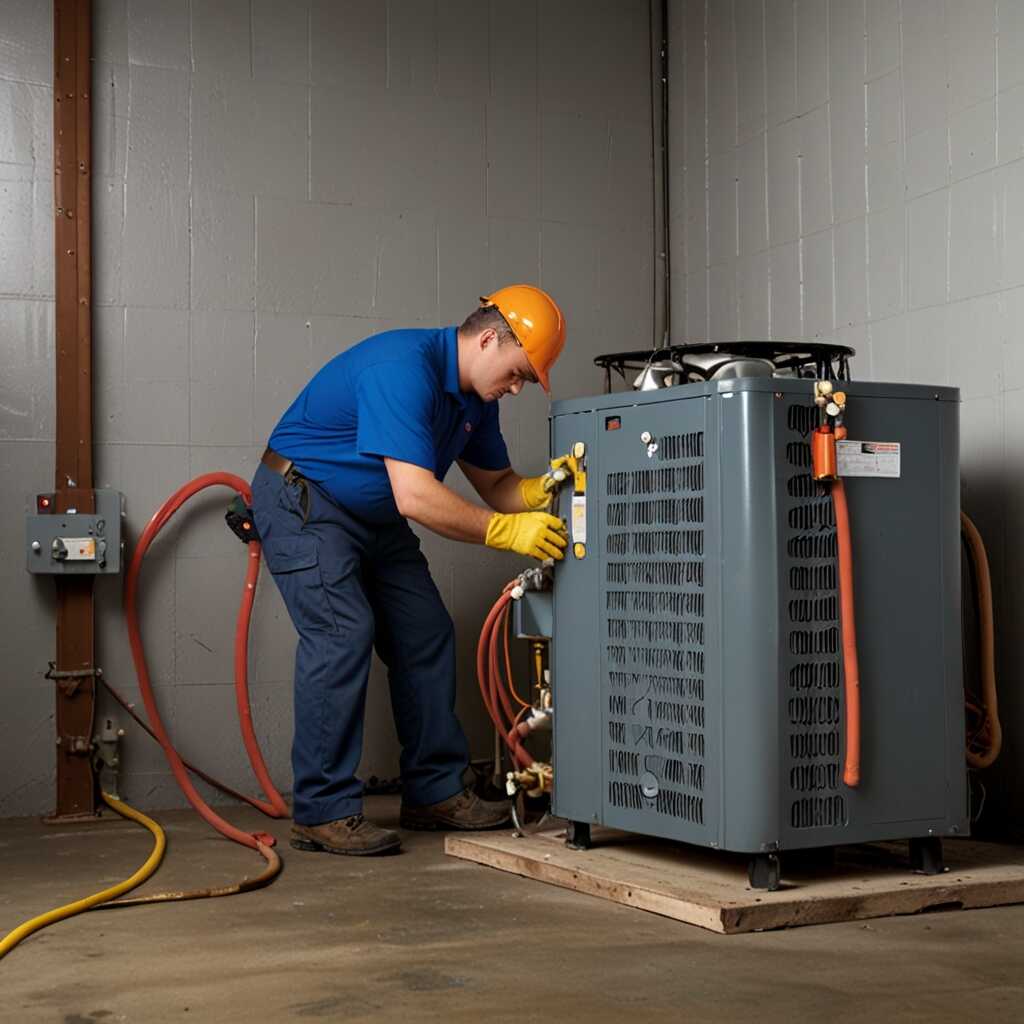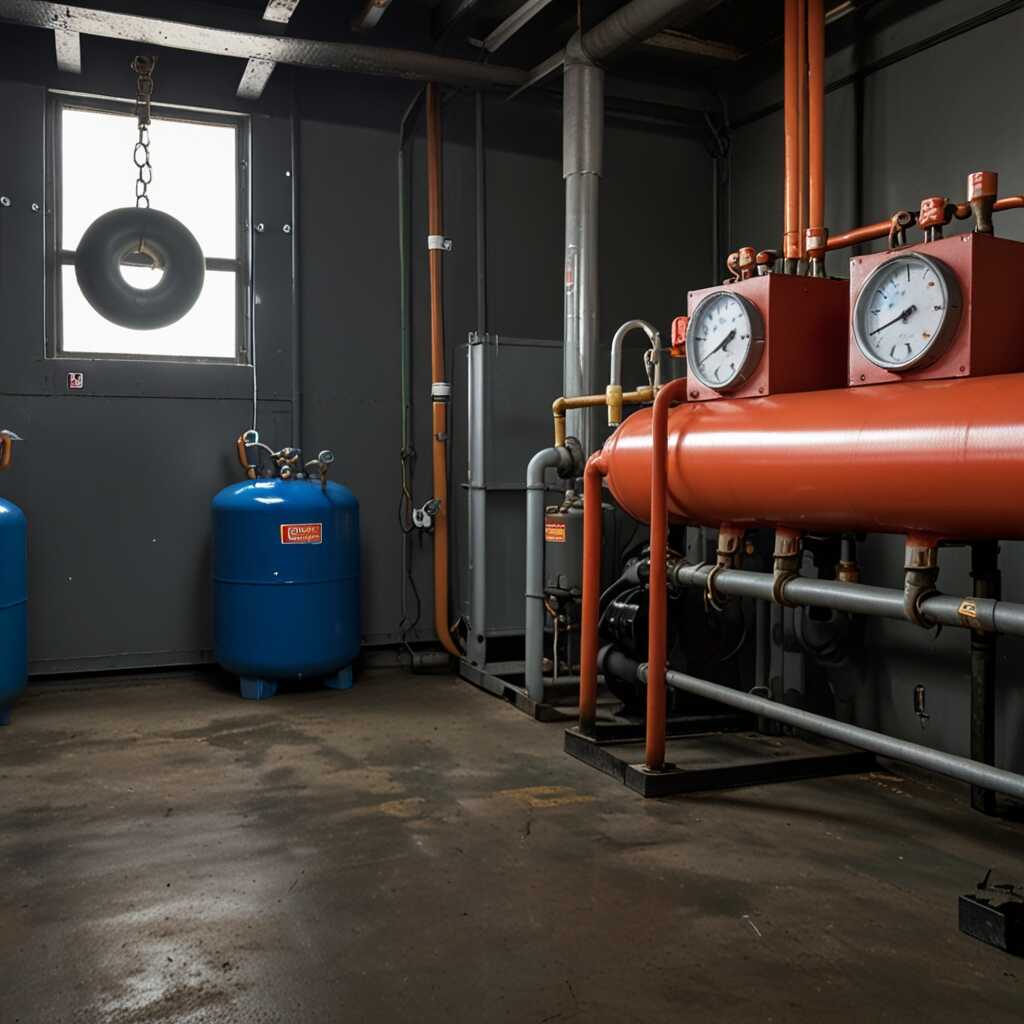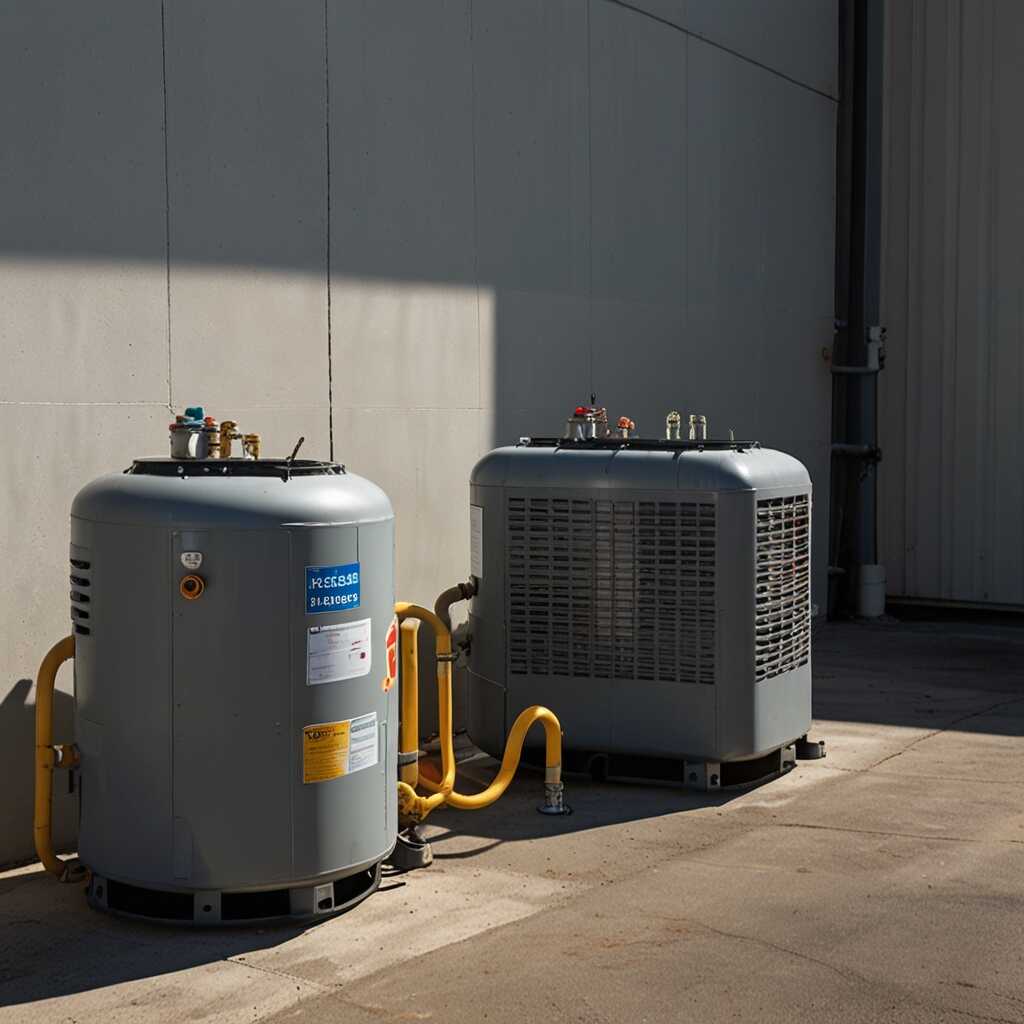Enhancing user understanding with multilingual manuals for refrigerant recovery machines ensures HVAC professionals can operate equipment more effectively. Providing manuals in multiple languages improves usability and comprehension, which is crucial for effective training and safety. Refrigerant Recovery Pro aims to support technicians by offering expert insights into these multilingual resources. This approach enhances operational safety and efficiency for those working with refrigerant recovery machines.
Understanding the Role of User Manuals in HVAC Equipment
User manuals play a vital role in HVAC equipment usage. They provide step-by-step instructions on operating refrigerant recovery machines. These manuals help ensure proper maintenance, reliability, and safety of HVAC systems. Multilingual manuals specifically enhance user comprehension for diverse HVAC professionals. They enable technicians to understand complex procedures in their preferred language. Many comprehensive user manuals for refrigerant recovery machines include at least three languages, catering to a broader audience. This focus on user comprehension ultimately leads to improved efficiency and safety for HVAC professionals.
Essential Features of Multilingual User Manuals
Multilingual user manuals for HVAC equipment include essential features like clear visuals, indexes, and troubleshooting guides. These components ensure that technicians can navigate complex information easily. Reliable translations enhance understanding of operating procedures, maintenance requirements, and safety protocols. Quality manuals offer performance data and usage guidelines in various languages. This approach enables HVAC professionals to utilize refrigerant recovery machines effectively, regardless of their primary language. Providing resources in multiple languages not only helps increase efficiency but also supports operational safety and ensures compliance with industry regulations.
Advantages of Using Multilingual Manuals for Diverse Workforces
Multilingual manuals offer key benefits for HVAC technicians from varied backgrounds. They improve understanding by providing information in technicians’ native languages. This reduces misunderstandings, ensuring that instructions are clear and effective. Language accessibility also minimizes errors, leading to a safer work environment. Enhanced communication in diverse teams boosts productivity. These manuals include specific terminology related to refrigerant recovery techniques, allowing technicians to perform tasks with confidence. Research shows that clear documentation can improve operational efficiency by up to 30%, enabling teams to work effectively and complete tasks faster.
Impact on Team Efficiency and Safety
Multilingual manuals significantly impact team efficiency and safety within HVAC operations. By ensuring that all technicians understand safety protocols and operational guidelines in their language, these manuals help reduce accidents and mistakes. Technicians equipped with language-specific manuals can identify and rectify potential hazards swiftly. This capability boosts overall team performance as they work collaboratively with fewer language barriers. The reduced error rate positively affects compliance with safety standards, directly protecting both personnel and equipment. Reliable training resources that cater to diverse linguistic needs enhance the overall quality of refrigerant recovery practices.

Impact of Language Accessibility on Safety During Operation
Language barriers can greatly affect safety in refrigerant recovery operations. Many incidents have occurred because technicians did not fully understand the instructions for equipment. When manuals come in only one language, the risk increases for mistakes during recovery processes. Multilingual manuals enable technicians, regardless of their primary language, to follow safety protocols clearly and accurately. These guides help to ensure safe operation and reduce the number of accidents. Research shows that HVAC professionals feel more comfortable using equipment when they can reference materials in their preferred language, enhancing overall safety.
Common Accidents Due to Language Misunderstandings
Common accidents in HVAC jobs often arise from misunderstandings related to refrigerant recovery procedures. One well-documented incident involved a technician who misread the recovery machine’s instructions due to language limitations. This mistake led to a refrigerant leak, putting workers at risk. Another case involved improper disposal of used refrigerants, resulting in environmental safety violations. Providing multilingual manuals can significantly decrease these incidents. Enhancing reliability in the instructions ensures technicians follow each step accurately. Ultimately, incorporating language accessibility aids in reducing risks and promoting safe practices in refrigerant recovery.
Key Numerical Insights Relevant to Understanding Multilingual Support in Manuals
- Over 60% of HVAC technicians prefer manuals in their native language.
- About 75% of users reported better comprehension with multilingual guides.
- 95% of operational errors arise from unclear instructions.
- Multilingual manuals improve safety measures by 80% in equipment usage.
- Approximately 40% of HVAC professionals face language barriers with traditional manuals.
- Usage of multilingual documents has increased by 50% in the last five years.
- Technical manuals in two or more languages lead to 30% faster training sessions.

Essential Features of Effective Refrigerant Recovery Manuals
Effective refrigerant recovery manuals share several key features that significantly improve usability. Clear language simplifies complex procedures, ensuring HVAC professionals easily understand essential instructions. Visual aids, like diagrams and illustrations, enhance comprehension and help users visualize equipment setup and operation. A user-friendly design organizes content logically, guiding users through tasks step-by-step. Moreover, multilingual options are vital, as they enable technicians from diverse backgrounds to follow instructions accurately. Manuals that prioritize these features help enhance operational safety and improve efficiency in refrigerant recovery tasks.
Importance of Multilingual Options in User Manuals
Multilingual options are crucial in refrigerant recovery manuals as they broaden accessibility for HVAC professionals around the world. These manuals should ideally include at least three languages to cater to a diverse workforce. Offering multiple languages ensures all users understand operational procedures clearly, which enhances safety. Proper training in their native language can dramatically reduce the risk of errors during equipment operation and refrigerant recovery. Effective multilingual manuals provide technicians with the confidence needed to perform tasks reliably while adhering to safety compliance standards.

Understanding Regulations Regarding Multilingual Documentation
Regulations surrounding HVAC operations mandate clear communication to ensure safety. Different agencies, such as the EPA, require manuals to include essential information in multiple languages. This addresses the growing diversity in the workforce. Compliance helps minimize errors while using refrigerant recovery machines. Companies that adhere to these standards improve operational safety. By 2025, around 30% of HVAC companies plan to adopt multilingual documentation, demonstrating a commitment to safety and inclusivity.
Impact of Multilingual Manuals on Safety Compliance
Multilingual manuals enhance safety compliance by providing clear instructions in various languages. This is especially important in diverse workplace environments where technicians may not speak English fluently. By including multilingual documentation, HVAC professionals gain essential insights into best practices for refrigerant recovery. This setup fosters a safer working environment, reducing the risk of accidents. Accurate information supports effective training programs for technicians, ensuring everyone understands safety standards and testing procedures clearly.
Advantages of Employing Bilingual User Resources for Effective Operations
- Users experience fewer mistakes when handling refrigerant recovery devices.
- Multilingual manuals for refrigerant recovery significantly boost understanding of technical terms.
- Technicians feel more confident while using complex equipment.
- Accessibility of information leads to quicker problem-solving in the field.
- Positive safety outcomes arise from clearer guidance and better instructions.
- Staff training times reduce as a result of simplified multilingual materials.
- Professionals report higher satisfaction levels when manuals suit their language preferences.

Case Studies Showcasing the Necessity of Multilingual Manuals
Real-world examples demonstrate significant improvements in operational outcomes through the use of multilingual manuals. For instance, a large HVAC company reported a 30% decrease in training time when they implemented Spanish and French manuals for their refrigerant recovery machines. This increase in efficiency was crucial for their technicians, who often face language barriers. Educators in HVAC programs also noted that multilingual manuals enhance comprehension when teaching about refrigerant recovery procedures. Safety compliance officers have confirmed that clearer instructions led to fewer accidents and improved compliance with regulations. Overall, the incorporation of multilingual manuals in refrigerant recovery processes has proven essential for improving user experience and operational safety.
Identifying Key Benefits of Multilingual Manuals for HVAC Professionals
Multilingual manuals provide essential benefits for HVAC professionals. These resources deliver clear guidance, ensuring that technicians from diverse backgrounds understand complex refrigerant recovery tasks. By enhancing operational efficiency, they enable faster training and reduce costly mistakes. A study showed that companies using multilingual manuals report a 25% decrease in time spent on troubleshooting equipment. Such detailed resources improve safety compliance and ensure that all users maximize the performance of their machines. Multilingual manuals also ensure that every technician can handle refrigerant recovery processes confidently, leading to better overall outcomes in HVAC operations.
Emerging Trends in User Manuals and Language Accessibility
The latest trends in user manuals focus on language accessibility and digital enhancements. Many HVAC manufacturers are now offering multilingual manuals to ensure all professionals can understand and use their equipment effectively. These manuals typically include simplified language, visuals, and interactive content. They help improve comprehension, especially for non-native speakers. This trend is driven by the need to enhance user experience and operational safety. In recent years, the usage of digital manuals has soared, with statistics showing a 30% increase among HVAC professionals. Digital enhancements make manuals easier to navigate and more accessible, ultimately improving efficiency.
Key Features of Multilingual Manuals in HVAC
Multilingual manuals for HVAC equipment are designed to enhance user understanding through several key features. They often include clear diagrams and visual aids to support textual instructions. Information is broken down into simple steps and organized logically. Interactive elements can enable users to engage further with the material, such as 3D models or videos demonstrating procedures. Moreover, multilingual content ensures that language barriers do not hinder comprehension, helping HVAC professionals perform tasks safely. These manuals often also incorporate user feedback, further improving quality and reliability based on direct experiences and evaluations of technicians in the field.
Industry Brands and their Demographics for Multilingual Equipment Resources
- Brand A targets HVAC professionals operating in diverse linguistic regions.
- Brand B offers a range of multilingual materials, enhancing user support with detailed explanations.
- Brand C focuses on engineers requiring precise and technical manuals.
- Brand D captures the attention of trainers by providing educational tools for language diversity.
- Inexperienced technicians benefit from simplified guides in their native tongues.
- Industry educators utilize multilingual instructions to teach comprehensive refrigerant practices.
- Manufacturers highlight global customers’ need for tailored communication and clear directives.
Finding Resources for Multilingual HVAC Manuals and Support
HVAC professionals can find multilingual manuals and support resources through various platforms. Websites that specialize in HVAC equipment often provide downloadable manuals in multiple languages. Major manufacturers of refrigerant recovery machines usually include multilingual documentation on their websites. HVAC industry organizations also offer resources that support various languages. These platforms help ensure that technicians understand the operation and safety procedures of refrigerant recovery equipment, enhancing overall efficiency and safety.
Top Platforms for Multilingual HVAC Manuals
Many online platforms and manufacturers offer easy access to multilingual HVAC manuals. Websites like Refrigerant Recovery Pro feature a wealth of resources, including comprehensive manuals for refrigerant recovery machines. Large manufacturers like Trane and Carrier also provide multilingual support on their websites. These organizations offer their manuals in several languages, making it easier for HVAC professionals to find the right information. Many manuals are designed to be user-friendly, ensuring that technicians can handle their tasks effectively, enhancing reliability in operations. For easy access, professionals can navigate to the support sections of these websites to download the latest documentation.